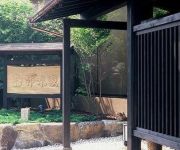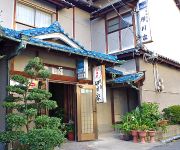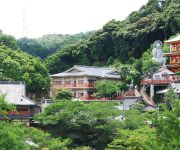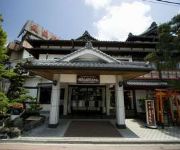Facts and Data
Webpages:
Official Unesco Page
Basis Data:
Unesco World heritage since: 1993
Size of heritage: 15 ha
- Buffer zone: 571 ha
Coordinates:
Longitude: 135,733°
Latitude: 34,617°
Summary
There are around 48 Buddhist monuments in the Horyu-ji area, in Nara Prefecture. Several date from the late 7th or early 8th century, making them some of the oldest surviving wooden buildings in the world. These masterpieces of wooden architecture are important not only for the history of art, since they illustrate the adaptation of Chinese Buddhist architecture and layout to Japanese culture, but also for the history of religion, since their construction coincided with the introduction of Buddhism to Japan from China by way of the Korean peninsula.
Location on Map
Show bigger map on Openstreetmap
Introduction
The Buddhist Monuments in the Horyu-ji Area, located in the Nara Prefecture of Japan, is a UNESCO World Heritage site that holds immense historical and cultural significance. This site encompasses the Horyu-ji Temple, which is one of the oldest wooden structures in the world, along with numerous other Buddhist monuments. The rich history and well-preserved state of these monuments make it a must-visit destination for history enthusiasts and spiritual seekers alike.History
The history of the Buddhist Monuments in the Horyu-ji Area dates back to the 7th century when Buddhism was flourishing in Japan. The area became a center for Buddhist teachings and practices under the patronage of Prince Shotoku, a prominent figure in Japanese history. The construction of Horyu-ji Temple began in 607 AD, making it one of the earliest Buddhist temples in Japan. The temple complex was initially built to promote Buddhism and serve as a place of worship and education. It housed numerous monks and scholars who dedicated their lives to the study and propagation of Buddhist teachings. Over the centuries, the temple faced several challenges, including fires and natural disasters, but it was consistently rebuilt and restored to its original glory.Current State
Today, the Buddhist Monuments in the Horyu-ji Area stand as a testament to Japan's rich cultural heritage and the enduring influence of Buddhism. The main attraction of the site is the Horyu-ji Temple, consisting of several buildings and pagodas. The most notable structure is the five-story pagoda, which is the oldest wooden building in the world. Its intricate architectural design and exquisite craftsmanship are awe-inspiring. The temple complex also includes the Main Hall, which houses numerous Buddhist statues and artifacts of great historical value. These include the famous Shaka Triad, a set of three statues representing the historical Buddha and his two disciples. The statues are masterpieces of Buddhist art, showcasing the skill and devotion of ancient Japanese craftsmen. In addition to the temple, the Horyu-ji Area encompasses a vast garden and surrounding forest, creating a serene and peaceful atmosphere. Visitors can explore the grounds, taking in the beauty of the natural surroundings while immersing themselves in the spiritual ambiance. The preservation and conservation efforts undertaken by the Japanese government and local authorities have ensured that the Buddhist Monuments in the Horyu-ji Area remain in excellent condition. The meticulous restoration work carried out over the years has maintained the original architectural integrity of the structures, allowing visitors to experience the site as it appeared centuries ago. In recognition of its historical and cultural significance, the Buddhist Monuments in the Horyu-ji Area were inscribed as a UNESCO World Heritage site in 1993. This prestigious designation highlights the universal value of this site and its importance in understanding the development of Buddhism in Japan. In conclusion, the Buddhist Monuments in the Horyu-ji Area in Japan's Nara Prefecture are a remarkable testament to the country's rich cultural heritage and the enduring influence of Buddhism. The well-preserved state of these ancient structures, along with their historical significance, make it a must-visit destination for anyone interested in exploring Japan's spiritual and architectural legacy.Hotels and places to stay
(RYOKAN) Kakimotoya
(RYOKAN) Restaurant & Ryokan Ukawaya
(RYOKAN) Ogawa
Shinkizan Gyokuzoin Shukubo
(RYOKAN) Shigisan Kanko Hotel
Kanpo no Yado Yamatoheguri
Sun Hotel Yamatokoriyama
Super Hotel Nara Yamato Koriyama
Ryosenji Shukubo Tenryukaku
Ikaruga Hotel
Videos from the area
Videos provided by Youtube are under the copyright of their owners.















